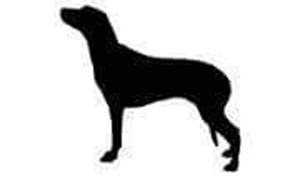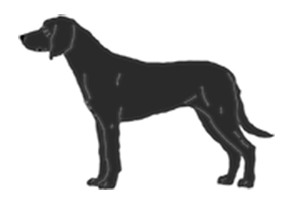Judging the Hamiltonstovare
As with any rare breed, judges education is essential. Judge education should always come from the national parent club or registry and never from an individual kennel. A judge's education presentation should be approved by a committee and biases removed from the presentation. The dogs used as an example should be able to show both the good and the bad. My goal with this blog is NOT to educate judges about the breed because there is a great judge's education tool available from the Hamiltonstovare Club of America that has been around for years. It is approved by the club, it is a word document file so that judges can easily print it out for their use at any time. I will post a link to it at the end of this post.
In my opinion there are a few rules that should be kept clear when judging this breed. The first is does it look like it can survive in a colder climate? Hamiltonstovare are a Swedish breed and they are expected to survive in every type of climate. The dog must have bone, substance, muscle tone and a correct coat to survive. A dog that does not have bone and substance in equal parts will never survive. This breed is not bred for speed so it should never look thin or racy. They should embody and give the impression of great power and strength. This breed needs to look like it has the endurance and power to run, not walk or trot, all day. That requires a lot of muscle and is only achieved by proper daily conditioning. The coat type, not the color, is needed to survive, the coat must have an outer harsh layer and a very short plush layer. The coat should be very dense and no hair should come off in the judge's hands during examination.
The next thing is make sure to check over items that are eliminating faults in the FCI standard, such as height. Height is an eliminating fault in the breed because it is a breed defining trait to distinguish it from other breeds native to the region, such as, the Finnish Hound. When a Hamiltonstovare and a Finnish Hound are placed next to each other, they should look related but distinctively separate from each other. Hamiltonstovare are smaller and more refined than the Finnish Hound. When in doubt, use a wicket, over or under of the prescribed height ranges is grounds for elimination. Please note that the height ranges for dogs and bitches are different.
Another very important thing to take into consideration is muscle tone. Hamiltonstovare should have clearly visible muscles especially in the front and rear. The front and rear muscles should be equal. Hamiltonstovare are an ideal dog to use the “Structure In Action” method as described by the great judge and dog breeder, Pat Hastings. If you are interested in canine structure, movement and why they do the things they do, please go to her seminar and/or buy the book “Structure In Action”. The main rule about dogs and canine structure is balance should always be your guide. If a dog isn't balanced in both front and rear angles then it will not be efficient in the job that it was bred to do.
When watching a Hamiltonstovare move around the ring, the gait should be smooth and efficient. It should cover a lot of ground with the least amount of effort. The legs should track effortlessly in 2 separate lines with only slight convergence to the center as the dog picks up speed. Limbs that cross, paddle, cow-hock out, appear choppy or have high lifting front action will never be able to survive in the field. The ultimate goal when judging this breed should always be: can this dog survive all day in the field with snow on the ground? If that answer is yes, then put it up, if no then do not award it at all. Hamiltonstovare are a scent hound and should never look like a sight hound at all. They should look like they came from scent hounds, a dog that is lacking in bone, muscle tone, substance, and have exaggerated front and rear angles goes against breed type and needs to be excused from the ring.
Hamiltonstovare have a different proportion, they are built on a series of rectangles, not squares. They should be slightly longer in the body than they are tall. They need to be rectangular because it allows them to be more flexible in negotiating rough terrain. The breed is bred to run, climb and push through a forest. They cannot do that job if they are square. Square dogs are more for running in flat fields, that is not like this breed at all.
Hamiltonstovare are a markings breed but it is also a working scent hound that still hunts in its native country. If the dog cannot do its job due to a structural fault then that should be the over-riding rule instead of awarding a pretty color. Hamiltonstovare should always be tricolor with very specific locations for the white, tan and black. If a judge is looking at a beautifully marked dog that is not structurally sound and a structurally sound dog with a markings fault then the judge should award the dog with the markings fault instead of the dog that is not structurally sound.
Which outline would you choose?
The answer is the outline on the right. If you chose the outline on the left, please re-read the Hamiltonstovare FCI breed standard. If in doubt, please visit the Hamiltonstovare Club of America Judge's Education document, here.

